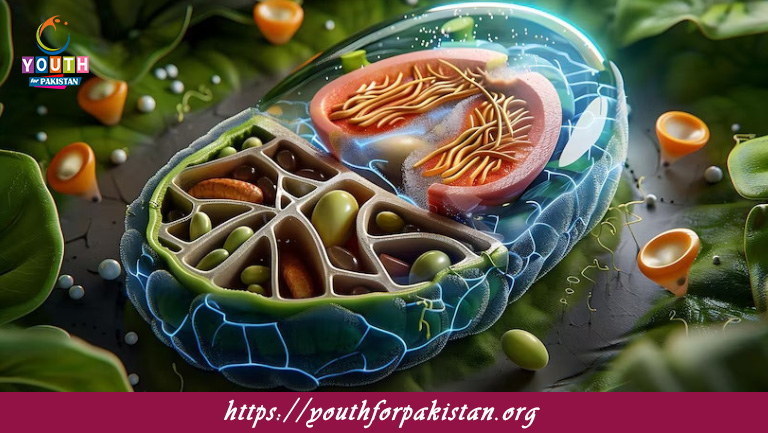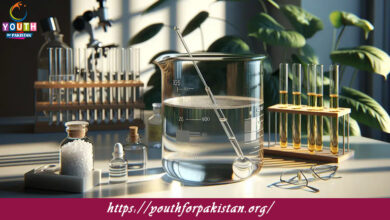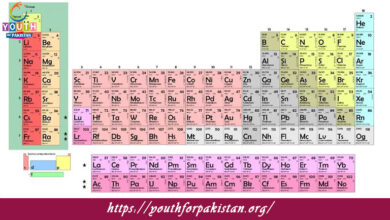Prokaryote And Eukaryote MDCAT MCQs with Answers

Welcome to the Prokaryote And Eukaryote MDCAT MCQs with Answers. In this post, we have shared Prokaryote And Eukaryote Multiple Choice Questions and Answers for PMC MDCAT 2024. Each question in MDCAT Biology offers a chance to enhance your knowledge regarding Prokaryote And Eukaryote MCQs in this MDCAT Online Test.
Which of the following structures is absent in prokaryotes?
a) Ribosomes
b) Nucleus
c) Plasma membrane
d) Cell wall
In prokaryotes, DNA is located in the:
a) Nucleus
b) Cytoplasm
c) Nucleolus
d) Mitochondria
Which of the following is a characteristic feature of eukaryotic cells?
a) Lack of membrane-bound organelles
b) Presence of a true nucleus
c) Absence of ribosomes
d) Circular DNA
Prokaryotic cells divide by:
a) Binary fission
b) Mitosis
c) Meiosis
d) Budding
Which of the following organelles is found only in eukaryotic cells?
a) Ribosome
b) Nucleus
c) Plasma membrane
d) Cell wall
Which of the following cell types contain a nucleoid region?
a) Plant cells
b) Animal cells
c) Bacterial cells
d) Fungal cells
Which organelle is involved in cellular respiration in eukaryotic cells?
a) Ribosome
b) Mitochondria
c) Golgi apparatus
d) Lysosome
Which of the following structures is present in both prokaryotic and eukaryotic cells?
a) Nucleus
b) Ribosomes
c) Mitochondria
d) Endoplasmic Reticulum
What type of genetic material is found in prokaryotic cells?
a) Linear DNA
b) Circular DNA
c) RNA only
d) DNA with histones
Which of the following is unique to eukaryotes?
a) Circular DNA
b) Membrane-bound organelles
c) Ribosomes
d) Cell wall
In eukaryotic cells, ribosomes are produced in the:
a) Cytoplasm
b) Nucleolus
c) Mitochondria
d) Endoplasmic Reticulum
Which of the following is not found in prokaryotic cells?
a) Flagella
b) Pili
c) Mitochondria
d) Cytoplasm
Prokaryotic cells are typically:
a) Larger than eukaryotic cells
b) Smaller than eukaryotic cells
c) The same size as eukaryotic cells
d) Multicellular
In eukaryotic cells, DNA is associated with proteins called:
a) Histones
b) Actin
c) Tubulin
d) Myosin
The cell wall of prokaryotes is made of:
a) Cellulose
b) Peptidoglycan
c) Chitin
d) Lignin
Which of the following is not a prokaryote?
a) Bacteria
b) Archaea
c) Cyanobacteria
d) Amoeba
The endoplasmic reticulum is a feature of:
a) Prokaryotic cells
b) Eukaryotic cells
c) Both prokaryotic and eukaryotic cells
d) Neither
Which structure allows for protein synthesis in prokaryotes?
a) Ribosomes
b) Nucleus
c) Golgi apparatus
d) Mitochondria
Eukaryotic cells evolved approximately:
a) 500 million years ago
b) 1.5 billion years ago
c) 2 billion years ago
d) 3.5 billion years ago
Which of the following structures is involved in movement in some prokaryotes?
a) Cilia
b) Flagella
c) Pseudopodia
d) Cytoskeleton
In eukaryotic cells, the Golgi apparatus functions in:
a) DNA replication
b) Protein modification and transport
c) Cellular respiration
d) Photosynthesis
Which of the following is a characteristic of prokaryotes?
a) Multicellularity
b) Absence of a nucleus
c) Presence of membrane-bound organelles
d) Linear chromosomes
Which kingdom includes prokaryotic organisms?
a) Plantae
b) Fungi
c) Monera
d) Protista
Which of the following is a membrane-bound organelle present in eukaryotes but absent in prokaryotes?
a) Ribosome
b) Nucleoid
c) Mitochondrion
d) Cell wall
In prokaryotes, genetic information is transferred through:
a) Mitosis
b) Conjugation
c) Meiosis
d) Binary fission
The cytoskeleton is a feature of:
a) Prokaryotic cells
b) Eukaryotic cells
c) Both prokaryotic and eukaryotic cells
d) Neither
Eukaryotic cells have:
a) Only a single chromosome
b) Multiple linear chromosomes
c) Circular chromosomes
d) No chromosomes
Which of the following organelles is responsible for photosynthesis in eukaryotes?
a) Mitochondria
b) Chloroplast
c) Nucleus
d) Ribosome
Which of the following organelles is unique to prokaryotic cells?
a) Nucleoid
b) Nucleus
c) Golgi apparatus
d) Mitochondria
Eukaryotic cells differ from prokaryotic cells in that they:
a) Have a plasma membrane
b) Have ribosomes
c) Have membrane-bound organelles
d) Have a cell wall
Which domain of life includes prokaryotes?
a) Eukarya
b) Bacteria
c) Fungi
d) Plantae
Which of the following is not a feature of eukaryotic cells?
a) True nucleus
b) Membrane-bound organelles
c) Circular DNA
d) Linear chromosomes
Prokaryotic cells are classified into which two domains?
a) Bacteria and Archaea
b) Eukarya and Bacteria
c) Eukarya and Archaea
d) Bacteria and Protista
Which organelle is absent in prokaryotes but present in eukaryotes for protein processing and sorting?
a) Ribosomes
b) Nucleus
c) Golgi apparatus
d) Plasma membrane
In eukaryotic cells, lysosomes are involved in:
a) Protein synthesis
b) Intracellular digestion
c) Photosynthesis
d) Cell division
Which of the following is an example of a eukaryotic organism?
a) E. coli
b) Paramecium
c) Staphylococcus
d) Cyanobacteria
The organelle responsible for detoxification in eukaryotic cells is the:
a) Smooth Endoplasmic Reticulum
b) Ribosome
c) Lysosome
d) Mitochondrion
Which of the following processes occurs in both prokaryotes and eukaryotes?
a) Photosynthesis
b) Mitosis
c) Meiosis
d) Binary fission
If you are interested to enhance your knowledge regarding Physics, Chemistry, Computer, and Biology please click on the link of each category, you will be redirected to dedicated website for each category.





